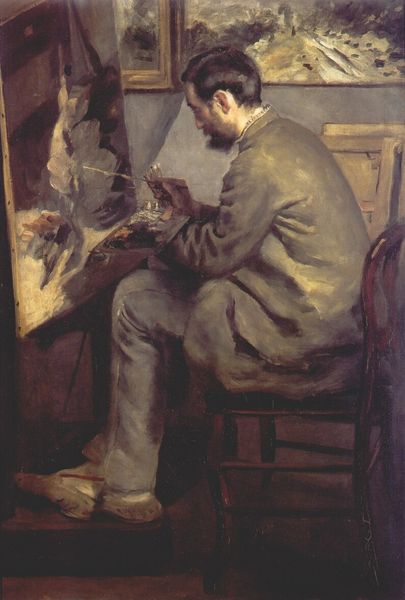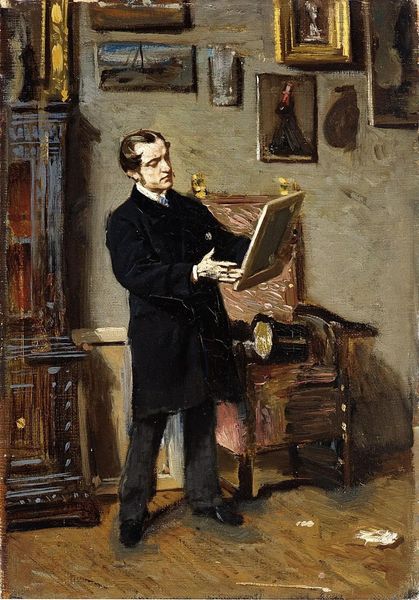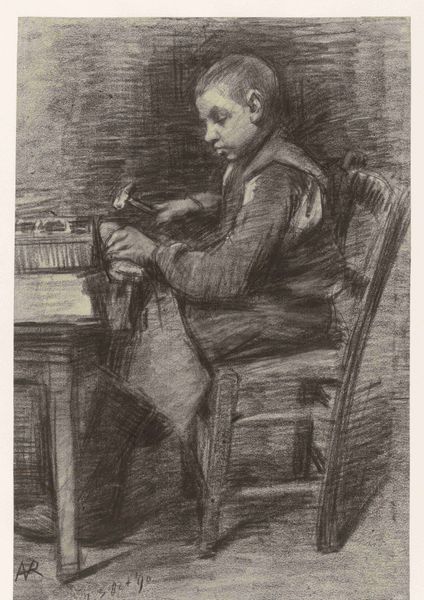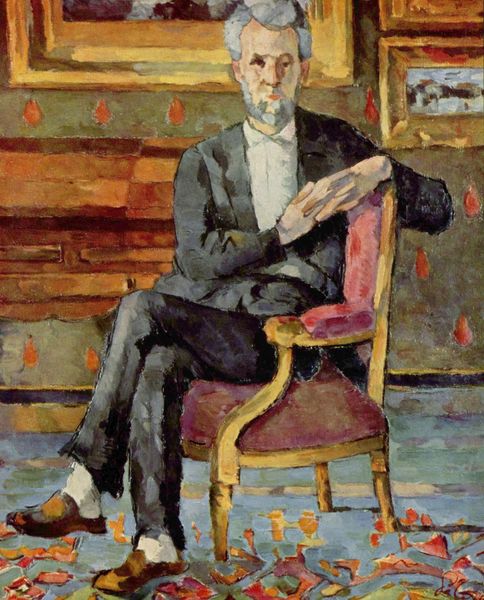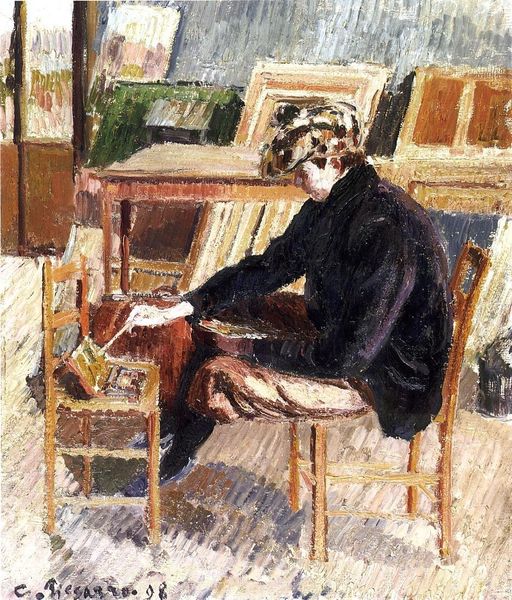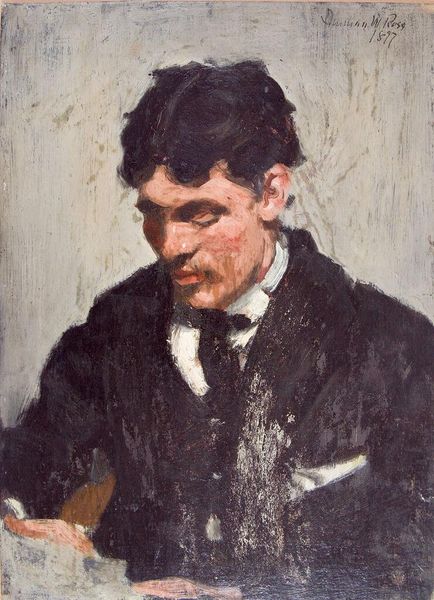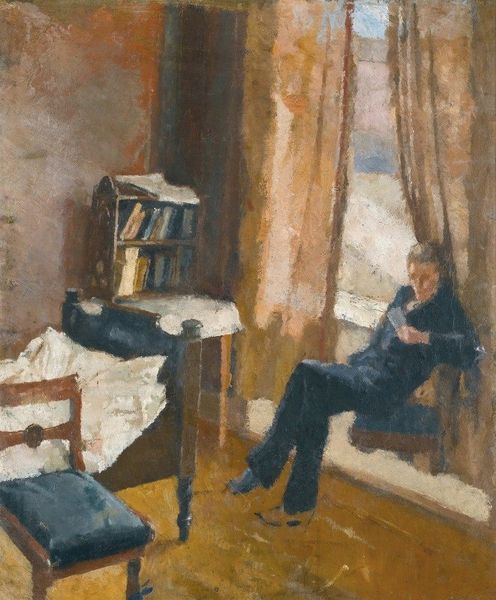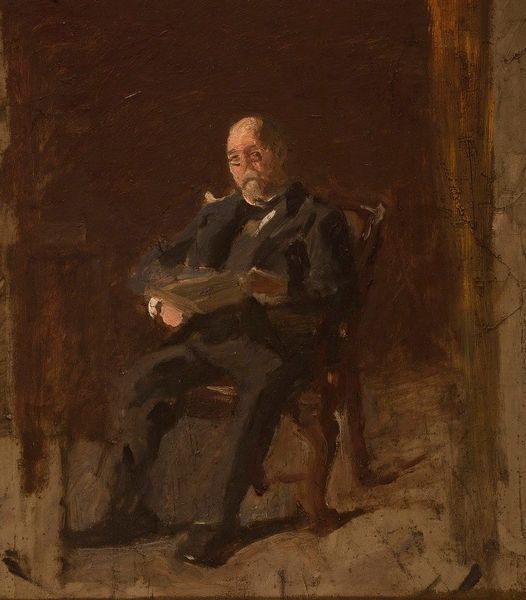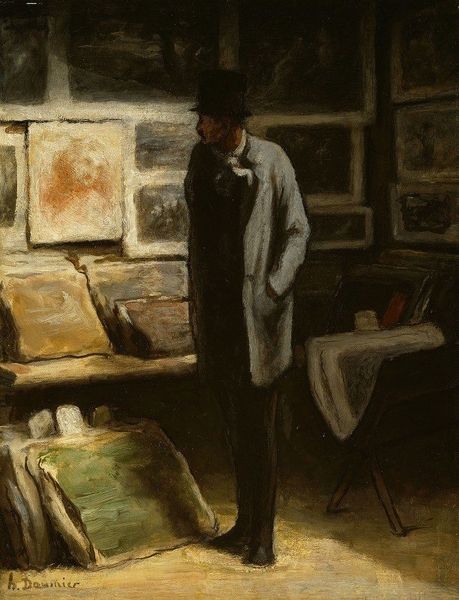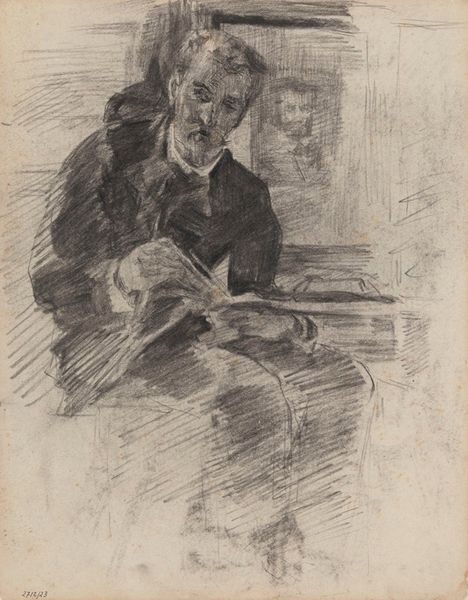
painting, oil-paint, impasto
#
portrait
#
painting
#
oil-paint
#
oil painting
#
impasto
#
academic-art
#
portrait art
#
modernism
#
realism
Copyright: Public domain
Editor: We are looking at Thomas Eakins' oil on canvas, "Between Rounds Study for the Timer," from 1899. There is a distinct mood conveyed, perhaps loneliness, centered on this solitary figure, head bowed at a table. How do you interpret this work, particularly in relation to its historical context? Curator: It is indeed evocative. I see this painting as part of a larger trend in late 19th-century American art, where realism grappled with depicting modern life, particularly masculine ideals within specific institutional frameworks like sports. Boxing at this time was undergoing professionalization and public acceptance, although controversial. What social tensions might a boxing timer represent? Editor: I hadn’t considered the social implications of boxing itself! Maybe it’s about control, or the limits of physicality imposed by societal norms? Is that reflected in how Eakins presents the timer? Curator: Precisely. Consider how Eakins positions him -- withdrawn, head down, almost melancholic. This isn't the heroic boxer in action, but a man marking the regulated boundaries of that action. He isn’t glorified. Eakins, known for his unflinching realism, here may be questioning the spectacle of it all. Do you see the power dynamics within the composition itself? Editor: Definitely. The muted colors and the timer’s introspective posture, away from the active ring... It shifts the focus to the human element *behind* the spectacle. So the institution shapes our view of the individual. Curator: Exactly! Art like this gives us insights into cultural attitudes and the complex relationship between individuals, institutions, and the visual culture that reflects them. Editor: I never thought about a portrait containing that much. I'll be thinking about the hidden aspects that other jobs have! Curator: Precisely, art can unearth subtle dynamics.
Comments
No comments
Be the first to comment and join the conversation on the ultimate creative platform.
